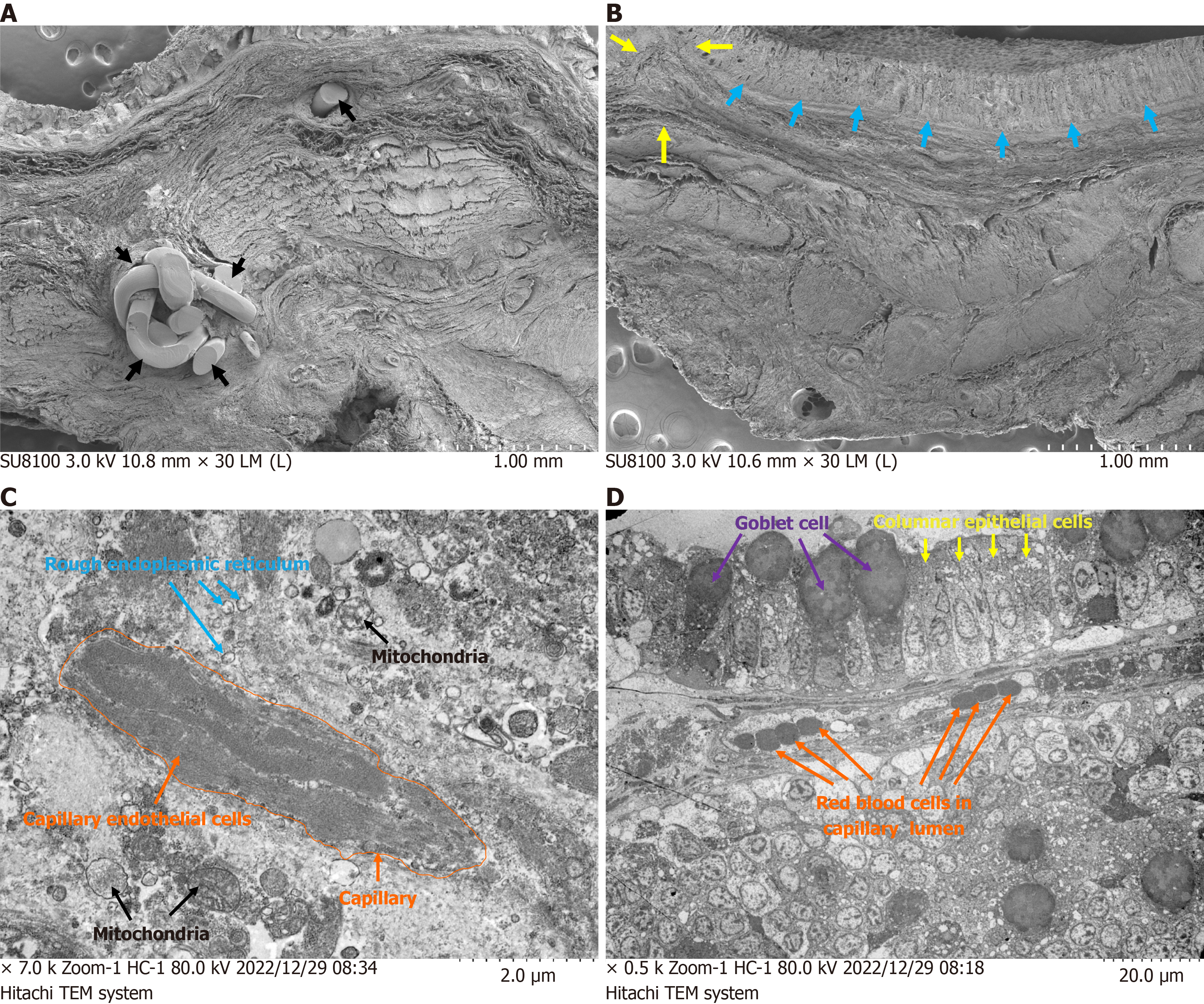Copyright
©The Author(s) 2025.
World J Gastrointest Surg. Feb 27, 2025; 17(2): 97862
Published online Feb 27, 2025. doi: 10.4240/wjgs.v17.i2.97862
Published online Feb 27, 2025. doi: 10.4240/wjgs.v17.i2.97862
Figure 6 Scanning transmission electron microscopic results of the anastomosis specimens at 3 months postoperatively.
A: Scanning transmission electron microscopic image for the suture group. The suture foreign body remained in the anastomotic tissue (black arrows). The anastomotic structure was disordered with obvious scar hyperplasia; B: Scanning transmission electron microscopic image for the anastomosis group. The anastomosis stoma were smooth without any foreign body in the anastomotic tissue (yellow arrows) and columnar epithelial cells were arranged neatly at the anastomosis (cyan arrows); C: Scanning transmission electron microscopic image for the suture group. The endothelial cells in the anastomotic capillaries suffered serious structural damage. The nucleus displayed a greater number of heterochromatin edge sets, while the cytoplasm appeared more uniform with a decrease in the number of organelles (orange arrows). The mitochondria and intramembrane appeared slightly swollen; D: The scanning transmission electron microscope analysis of the magnamosis group revealed normal mucosal structure of the anastomosis, abundant mucus particles in the goblet cells, and tightly bound intercellular junctions. No obvious inflammatory cell infiltration was observed in the mucosa and submucosa.
- Citation: Liu SQ, Zhang HK, Lv Y, Xu XH, Li YF, Quan DW. Magnamosis for rectal reconstruction in canines. World J Gastrointest Surg 2025; 17(2): 97862
- URL: https://www.wjgnet.com/1948-9366/full/v17/i2/97862.htm
- DOI: https://dx.doi.org/10.4240/wjgs.v17.i2.97862









